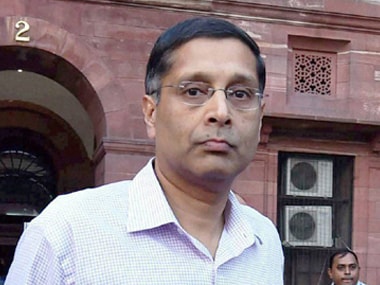Possibly, these are times when the common man on the street is highly puzzled with the widening divergence of high frequency statistical data put out by the government on the inflation, growth figures and the reality on the ground. The government owes an explanation to the layman on two aspects: One, is the economy indeed going into deflation, as the government’s chief economic chief advisor Arvind Subramanian warned on Wednesday even as prices of essential items, especially those of food and vegetable, continue to sky-rocket. Second, did the economic growth actually pick up during April-June to 7.1 percent from 6.1 percent based on the gross value added (GVA) or did the growth decline to 7 percent from 7.5 percent based on the headline GDP numbers? [caption id=“attachment_2419248” align=“alignleft” width=“380”]  CEA Arvind Subramanian[/caption] These are matters of interpretation but certainly there is a case to arrest the divergence in various data points and make the numbers more convincing, aligning with the reality on the ground. The wholesale price-based inflation (WPI) has been in the negative territory for the past several months, whereas the trend on consumer price index (CPI) inflation, though in a downtrend, still remains tricky largely on account of the uncertainty surrounding the monsoon and possible reversal of the declining trend in the international crude oil prices. On Wednesday, Subramanian warned that deflation is a far greater worry than inflation. Citing the GDP data, the economic advisor said ‘in terms of prices measured by the national income accounts’, we are closer to deflation territory and far, far away from inflation territory.’ Deflation, by definition, happens when prices fall in an economy, typically during a slowdown phase, in tandem with the fall in productivity. Such a situation increases the value of money, just like inflation decreases the value. So if Indian economy is indeed staring at deflation, then that also indicates that economic slowdown, on account of overall productivity fall, is an reality. So how does the government argue that the April-June GDP growth numbers should have been better than what the numbers show - purely due to increase in indirect tax collection? Are we staring at a deeper economic slowdown? Has prices actually fallen? “Inflation expectations are still high primarily due to high food prices. Food is a critical driver,” said Gaurav Kapur, chief economist at RBS. But, food prices have to come down eventually supported by lower fuel and commodity prices, Kapur said. Subramanian explains that deflation is a near-reality going by GVA, which is net of taxes and subsidies. The GVA is thus suggesting that broader price in the economy is zero. GVA deflator shows inflation in the broader economy is 0.1 per cent. If indeed we are looking at a state of deflation, then that raises questions on the RBI’s current stance of focusing primarily on CPI retail inflation for policy formulation. True, WPI has been in the negative territory for several months, but the CPI is not. The CPI inflation has stayed between 5 percent and 7 percent for the most part of in the last one year, before falling to 3.78 percent in July. In India, where food inflation is critical, price rise in food and vegetable items has been hitting the common man hard. The RBI is still skeptical on the reported death of inflation. The central bank has cited the upside risks to inflation going ahead if the monsoon doesn’t turn out to be good and when the benefit of base effect gradually begin to fade beginning September. Also, the prices of food and vegetable items have increased in the recent months. In this context, if the government believes deflation is a major threat, the very relevance of a CPI-focused monetary policy is questionable. The government’s data releases, be it the methodology to calculate GDP and the right indicator to assess price trends, have always been seen with slight amount of suspicion by experts. Often, the wide mismatch in the official figures and the actual situation on the ground (for instance high GDP number but low credit growth, industrial performance in the economy), has puzzled the public. With admitting the deflationary scenario, the government faces questions on its perception on the actual status of economic growth and the sharp divergence between WPI and CPI inflations. In the current context, it is difficult to convince the common man about the statistical deflationary scenario, when the reality on the ground is different. If the government indeed expects a deflationary scenario, then it owes a few explanations.
With admitting the deflationary scenario, the government faces questions on its perception on the actual status of economic growth and the sharp divergence between WPI and CPI inflations
Advertisement
End of Article


)

)
)
)
)
)
)
)
)



